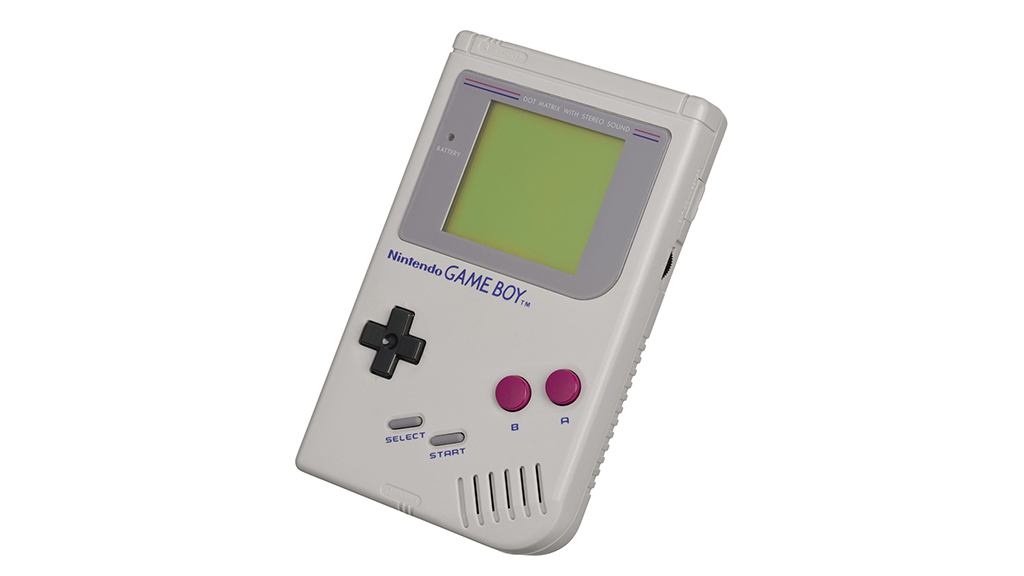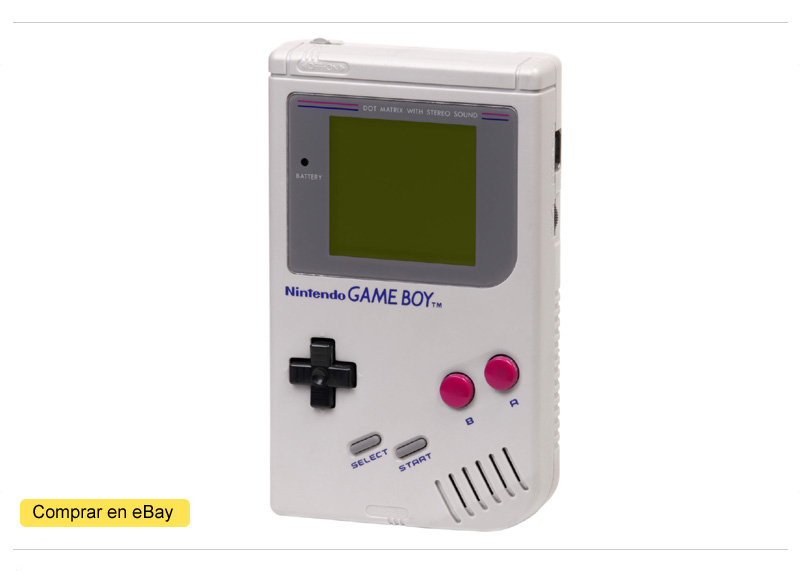The Game Boy is the quintessential handheld in the history of video games. A portable console that amazed a generation and marked a before and after in the history of consoles: Portables were here to stay, a new battlefield was opening and Nintendo presented for this new contest the machine with fewer features, but more balanced… It would kill all its rivals.
Whether you enjoyed the original Game Boy at the time, or if you were not so lucky, at Infoconsolas we present the most nostalgic, retro and elaborate article to remember and learn about the portable that expanded the video game market to all places and moments. Let’s rediscover the history of the Nintendo Game Boy!
| COMPANY: | Nintendo |
| CONSOLE GENERATION: | 4TH GENERATION OF CONSOLES |
| RELEASE DATE: | April 21, 1989 in Japan July 31, 1989 in the USA September 28, 1990 in Europe |
| GAMES CATALOG: | 1046 original GameBoy 915 Game Boy Color games |
| SOLD UNITS: | 87 million worldwide |
| LAUNCH PRICE: | 12,500 yen in Japan, 89.95 $ in the USA and 8,990 Pts. in Spain |
| PROCESSOR: | Sharp LR35902 8-bit at 4.194304 MHz |
| FORMAT: | Cartridge |
| BUY IT ON EBAY: | https://ebay.us/Ffws6l |
- History of the Game Boy
- The second youth of the Nintendo Game Boy
- Price of a portable Game Boy console, how much did it cost?
- The price of the Game Boy video games, how much did a cartridge cost?
- Collect the game boy
- Buy a Gameboy
- TOP Retro: Best Game Boy Games
- Nintendo GameBoy FAQ
- Technical characteristics of the Game Boy
Game Boy, Nintendo’s handheld
Game Boy is the most popular handheld console in video game history, released in 1989 in Japan. 1990 in Europe and January 1991 in Spain, the original Game Boy sold more than 87 million units, marking a generation, a milestone that made it the most successful console of its time.
Many others have come after the Game Boy, but none have had such an impact on the video game industry or on our lives. A console that showed that power is not the most important thing and expanded the video game console sector to another level, reaching an audience previously closed to traditional consoles. Portable, 4 batteries, pocket, a huge catalog of games, from Nintendo and on top of that, the cheapest! Celestial music for our ears, the queen of recreation.
Like the vast majority of products, the Nintendo portable does not appear unexpectedly as a new technology out of nowhere, there are many different factors that made it possible for the GB to be a feasible console to be marketed and produced in 1989. Although we live today in an era in which we are not even aware of the technological advances that are hidden under the casings of our devices, since we have completely normalized them and we are not aware of the MHz of one or another chip, in the 80s ‘ to make a portable electronic device, with its own screen, an acceptable battery life, capable of running games comparable to the NES / Famicom, with playable results and encapsulating everything so that, without ventilation, it would fit in the pocket of a child of 10 years, at a reasonable price suitable for a large part of society, was a feat never before accomplished.
It is worth emphasizing this last aspect, since time has made us see the Game Boy as an endearing console, but with a low technological profile below its competitors. Nothing could be further from the truth, everything in the Game Boy was studied to be as it was, its technical characteristics do not respond to an inability on the part of Nintendo to create a more advanced console, but because of the vision, tenacity and good Playing a game industry genius, we’re talking about the incomparable Gunpei Yokoi, general manager of Nintendo’s “Research and Development 1″(R&D1) group.
The inventor of the Game Boy: Gunpei Yokoi
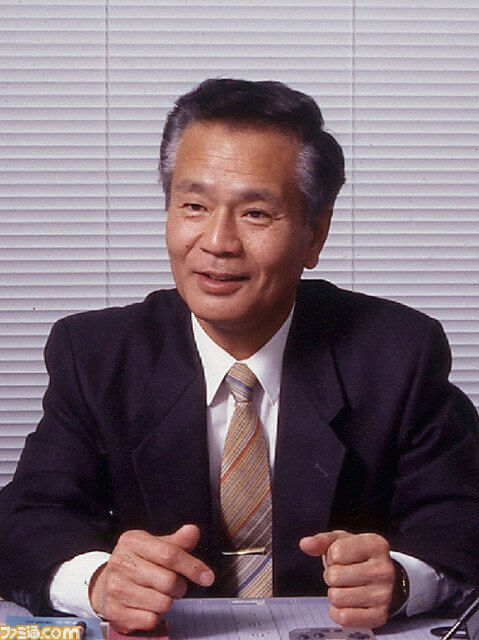
It is impossible to separate the history of the Game Boy from that of its creator, Gunpei Yokoi. Born in Kyoto (Japan) in 1941, he began working at Nintendo in 1965 as a maintenance engineer on the assembly line for Hanafuda cards (flower cards), five years later thanks to the toy invention of the “Ultra Hand ” (an extendable arm), Nintendo president Hiroshi Yamauchi transferred him to the product development department, at a time when Nintendo was responsible for, in addition to cards, making children’s toys. Gunpei Yokoi stood out at that time showing great creativity and inventiveness.
Years later, Nintendo would enter the world of video games with arcade machines and home consoles (the 5 Color TV Games, for example the Color TV-Game 15), creating its R&D1 development division, of which Gunpei Yokoi would be the responsible and in which Shigeru Miyamoto himself would work. After the years of Pong and its variants, at the end of the 70’s there was a boom in video games with new ideas and mechanics, technologies (lower production costs) and new console and microcomputer systems, that is, a resurgence of video games conquering shops and homes. It was in that boom when Gunpei Yokoi observed on a Japanese high-speed train, a businessman hanging out with his calculator, that would be the spark of the Game & Watch:
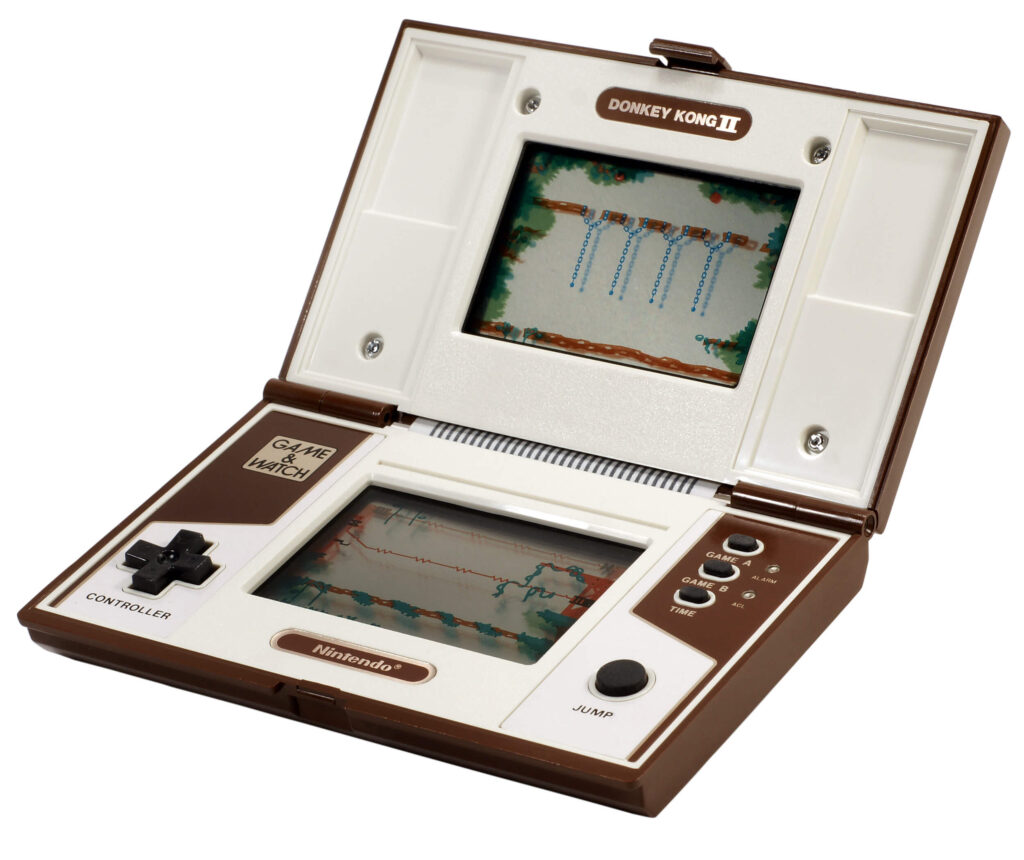
Working in a very similar way to that of a calculator and taking advantage of the benefits of LCD screens, the idea was to simulate movement depending on the buttons that were pressed, turning a calculator into a simple game, which also incorporated a clock. and an alarm. In this way, the first Game & Watch was launched in 1980 in a series of 59 little machines that lasted until 1991. In this way, Nintendo managed to bring video games to patios, parks, subways and anywhere where there was a child who wanted to play a game. game, showing that any time and place was good to enjoy video games.
As is evident, no one doubts the parallelism between the Game Boy and the Game & Watch, both created by the same mind and with the same concept, to bring video games to all places, crossing the barrier of homes and arcades. But the Game Boy is much more than a continuation of the Game & Watch, during the 1980s video games evolved and thanks to consoles such as the NES itself or the Atari 2600, requirements such as video game cartridges were standardized. No one wanted a dedicated console anymore, gamers wanted to enjoy something new every month and be able to trade games with their friends and family.
RETROCURIOSITY! In the development of the console, there was a conceptual dispute between Gunpei Yokoi and Satoru Okada, another of the most influential figures within Nintendo (he started working at the company in 1969), who would hold the position of General Director of R&D1 once Gunpei Yokoi abandoned him. Gunpei Yokoi had the idea of a continuation of the Game&Watch, a very cheap console with its own games made by Nintendo, while Satoru Okada was adamant that the new Nintendo console should be a portable Famicom with its own and external games... Fortunately , the end result was a combination of both concepts. Thank you Gunpei for letting yourself be influenced by a subordinate!
On the other hand, home systems had advanced so much during the 1980s that comparison with Game & Watch and the like was ridiculous. NES, Master System or PC Engine offered us extremely complex and developed video games, comparable in many cases to arcade games. The white Nintendo had to be on par and measure up if it really wanted to be a “portable console and not just another little machine.”
In this way, Gunpei Yokoi was clear: Nintendo had to launch a small console that could run video games comparable to those of the NES, that had a long-lasting battery consumption and that had an economic price since it was destined to a child audience and to monopolize the entire market. In other words, combine all the benefits of the Game & Watch with those of the NES in a single device.
The solution they provided was to use a 4-tone monochrome LCD screen to minimize consumption, with a Sharp LR35902 CPU, which was a modification of the Z80 (which in turn is based on the Intel 8080 from 1974), a microchip economic of acceptable consumption, which facilitated the work of the programmers to be based on an old acquaintance. 8 kB of internal SRAM and another 8 kB of internal VRAM, completed the basic features of a console that had been designed to reach all homes but with an extra condition, the GameBoy should also be a resistant console proof of football matches in recess, I can attest that they succeeded. They could have created a more powerful machine, with more definition, with color… but the balance would have been unbalanced to one side, raising the price and consequently reaching a smaller number of customers.
The virtue of Gunpei Yokoi was to create a perfect console as a whole, a perfect harmony that hid its shortcomings and offered a series of advantages that became solid pillars against the competition.
The predecessors: Microvision and Epoch Game Pocket Computer
When talking about the Game Boy, there is a tendency to idealize the history of Gunpei Yokoi and Nintendo, omitting part of the history and implying that portable consoles practically arise from the GB and the Game & Watch. Nothing could be further from the truth, the success of the Italian plumber’s portable console is due to balancing all the necessary aspects to offer us a good product adapted in quality and price to its time, something that its contemporaries did not achieve, but the console concept portable with cartridges had been invented many years ago:
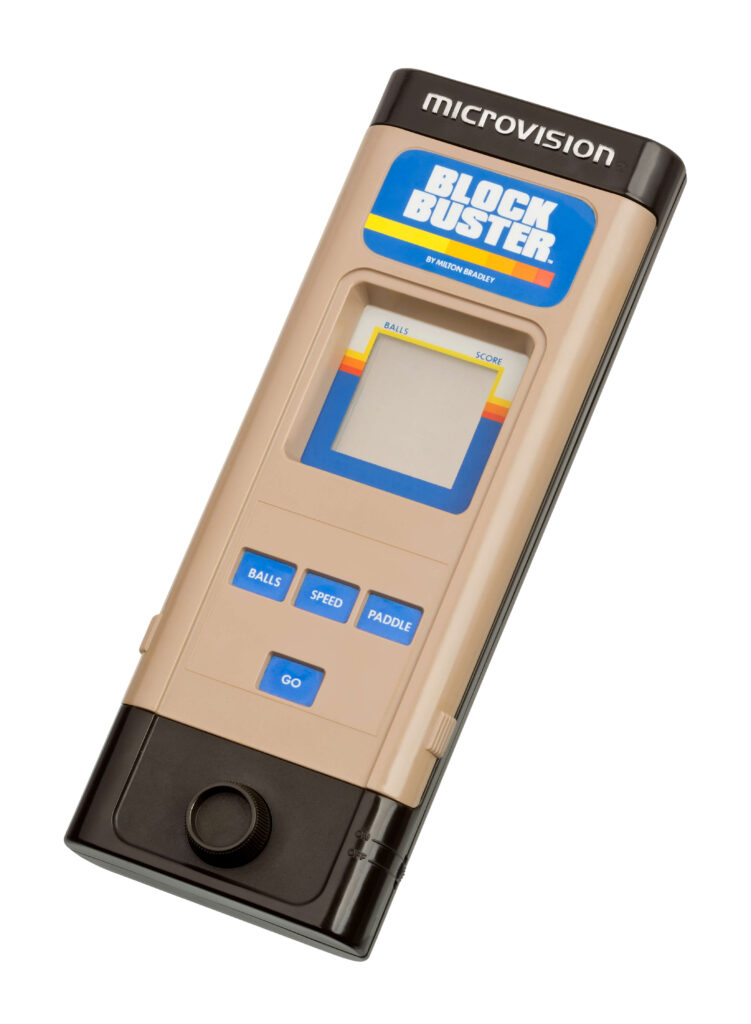
Microvision, 1979: From MB, the Microvision is the first portable console in history. With cartridges and a 16×16 liquid crystal display, a 100 kHz CPU and a dozen titles, this laptop was YES ahead of its time, 1979 gentlemen, 1979…
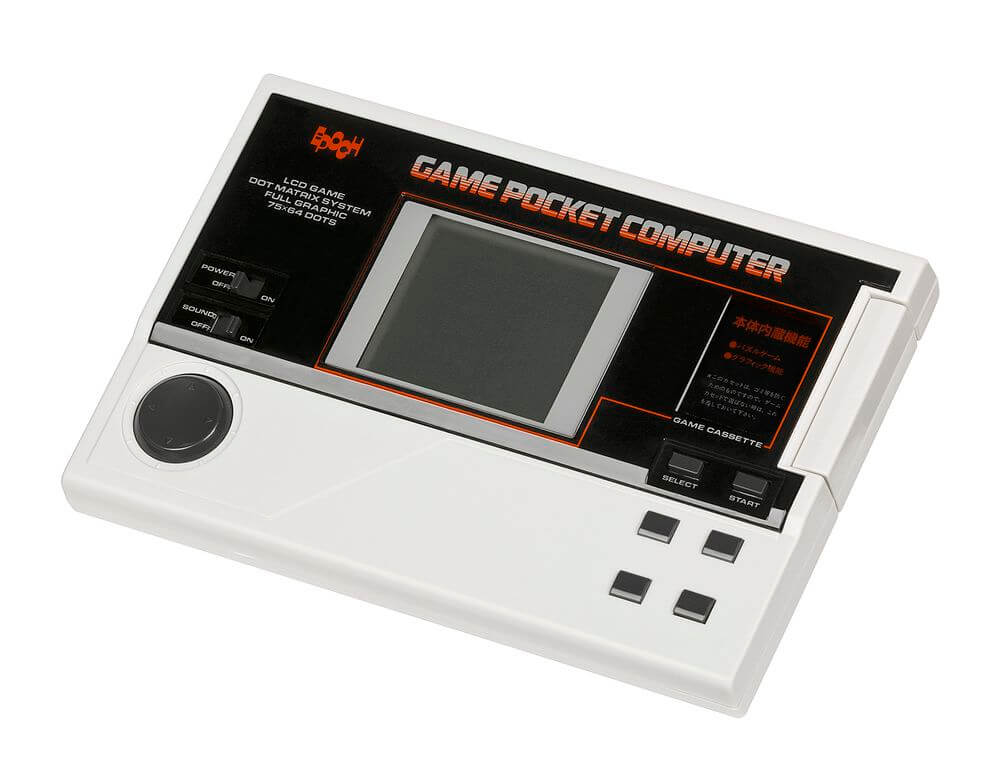
Epoch Game Pocket Computer, 1984: Released by Epoch in Japan and consequently being a forced reference for Japanese video game companies, this cartridge handheld with a 75×64 pixel LCD screen and 6 games was a true predecessor of what was to come. get. A rarity in its time that marked the way forward for other companies.
Gameboy launch
Game Boy came out in Europe in September 1990, being delayed a few months in Spain until January 1991. Its launch was accompanied by a good advertising campaign which was boosted months later with the launch of new magazines specializing in consoles with large national circulation. Although it may seem otherwise, the launch of the GameBoy was not a bed of roses, at the time of its release it had to break many barriers and unknowns, the concept of a portable was something totally new and the stores, distributors and Nintendo itself had to teach us in what it consisted of and that it was a portable console. Let’s take a look at a 1990 ad advertising Nintendo’s console through mail order a month before its release:
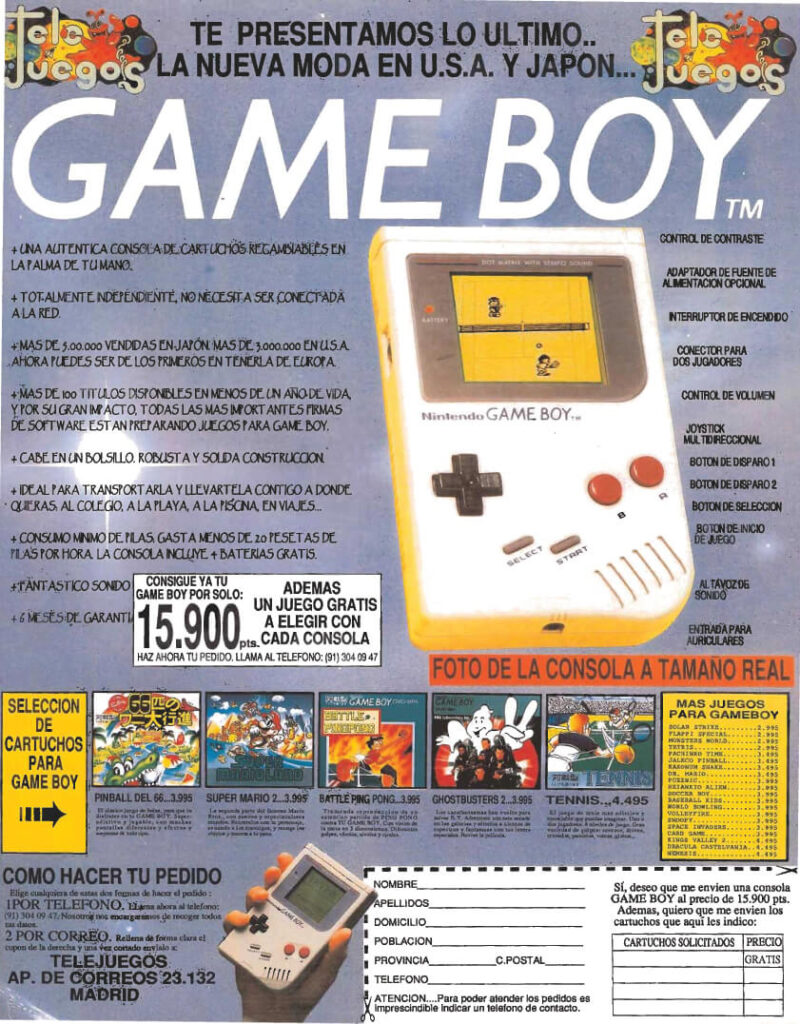
“Authentic cartridge console, independent of the network, previous sales in Japan and the USA, robust and solidly built, ideal for transporting it, 20 pesetas/hour of battery consumption, contrast control, censor switch, volume control, selection, shooting…” The horror of any publicist! The unique proposal did not come with them… The Game Boy was a new concept for most users, a new way of enjoying video games, something revolutionary for the time and as such, they did not have anything easy to start with. A separate topic, the most advantaged of you will have noticed that in this campaign / announcement the price was significantly lower than the starting price of the console.
And Japan, where the launch was the first in the world, sales were slowly going down, due to lack of knowledge, the public and the general public took a few months to fear something never seen before in Japan, but the confidence of that the Famicom (NES) had spawned helped speed up the porting process. And in the rest of the world we had it much easier for three reasons:
- The console had already triumphed in Japan, which caused the support of the third parties. The hardest work was already done.
- The Atari Lynx had been released in late 1989, being a popular brand it paved the way for the Game Boy by helping the public understand what a handheld console was and what it was.
- Tetris. In Japan they could not enjoy it from the first moment due to legal licensing problems. But in the rest of the world it did arrive on time.
Tetris, Tetris, Tetris, Tetris, Tetris!! Tetris was everything, never has the launch of a console been accompanied by such a successful game. The Nintendo handheld was presented to the world (North America and Europe) with an addictive game that was triumphing in arcades around the world, opening the video game market once and for all to the female public. With a stroke of the pen, with a single title, the Game Boy had realistically and effectively doubled its market niche, at a time when the industry, with few exceptions, had managed to conquer the female audience, the Game Boy was presented as a suitable and ideal console for both genders, introducing millions of players to video games.
We all know the mechanics and history of Tetris, its success and its devilish addiction. Tetris was the perfect complement for the Japanese laptop, a great game that is still reissued, versioned and played by millions of people today. For many of us, without a doubt the one on the Game Boy is the real TETRIS, the good one, the one that brings back memories of patios, weekends and picnics with friends since it was one of the few games that having them all , you could enjoy a double with the link cable, which served as an excuse for our parents to let us buy the new Nintendo laptop since it wasn’t a “little alien”, it was an “educational” puzzle. A perfect combo that made the launch of Nintendo’s Game Boy a success.
The Game Boy catalog of games
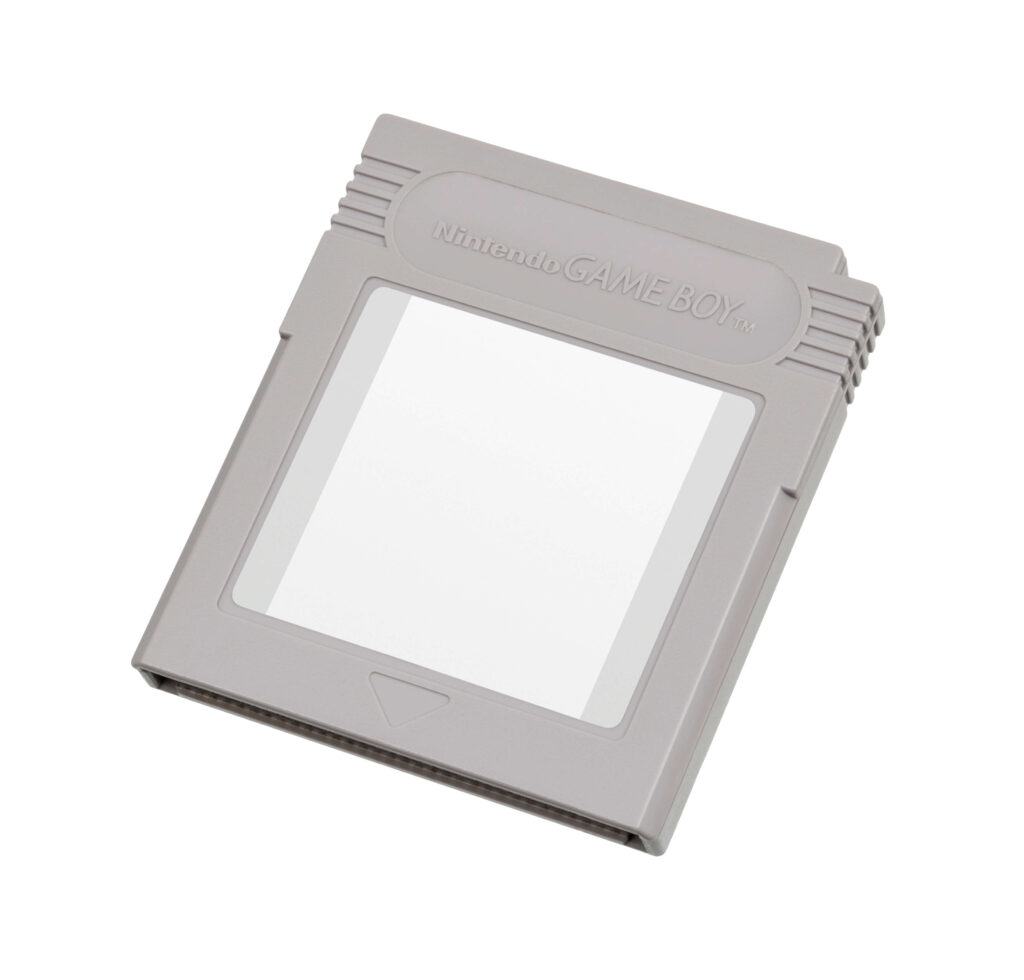
The Nintendo Game Boy’s video game catalog is immense, unfathomable. More than 800 cartridges for the Nintendo handheld give us an idea of how successful it was at the time. As usual, within those hundreds of games we have both authentic gems and others that do not deserve to be named, but broadly speaking, we can distinguish between the first batch of releases and the later ones:
The initial concept of the GameBoy was very similar to that of video games for mobile phones, they were designed to play quick games in circumstances such as the bus stop, a recess, or a waiting room. Consequently, deep games or with game times that were counted by hours were not sought, the experience had to be short and with short-term gratification. Let’s look at three examples of their early releases:
Super Mario Land
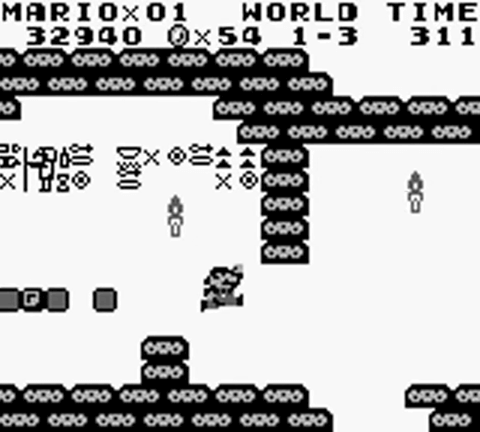
One of the strangest Marios ever, unmistakably influenced by the Game Boy handheld concept. With a Super Mario Bros 3 already released in Japan since 1988, in Super Mario Land we find ourselves with a completely linear game, of considerable difficulty and with a short duration between 30′ and 45′, depending on our ability. The closest thing to a Mario arcade.
Alleyway

A version of the mythical Arkanoid which in turn was the Atari Breakout which in turn was Pong… A good game that put us at the controls of a space ship driven by Mario, testing our nerves. With a simple mechanics and hardly any depth, it had no other ambition than to entertain us, something that it achieved perfectly.
Tetris
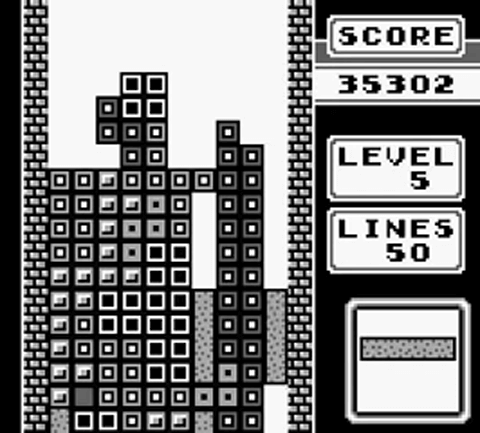
We have already said everything about Tetris, belonging to the first batch of releases, it was characterized by short games in its different game modes and satisfaction in each line of our game. Sorting and refilling has never been so much fun.
These are the three exponents of the first batch of Game Boy video games, apparently simple games, designed to play short but highly addictive games. But before long, the Game Boy proved that it could do much more than that, and more importantly, that gaming sessions could be (and were) much longer than initially estimated.
By having games that surpassed many of the domestic systems of the time (Amstrad, Spectrum, Atari 2600…), when I got home the Game Boy was not replaced by another system, but remained the main system, this together At a time when most homes had only one television (with families of 4 or 5 members) and users faced parents on the sofa or siblings hoarding computers or consoles, the GB began to receive conversions from the NES and exclusivities that exploited the full potential of the console, from a home console perspective, that is, with long gaming sessions.
At this point, the Game Boy touched all genres, all ideas, and dared, as we shall see later with all the successes that emerged in its long commercial existence.
The Game Boy Competition
The Game Boy had a multitude of systems that tried, without success, to unseat it from the Olympus of portables. Actually, the only consoles capable of relegating the Game Boy have been the later versions of the Game Boy itself or the rest of Nintendo’s portables. Outside of Japan the GB never had a worthy rival who managed to make things difficult for it, in Japanese lands things are already changing a bit… Let’s see their competitors:
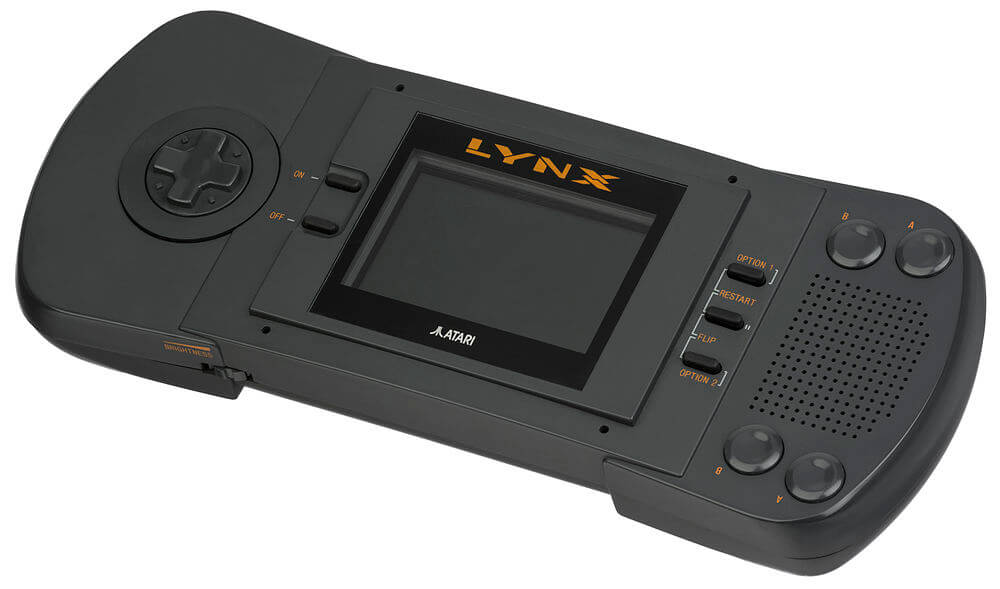
Atari Lynx, 1989: Incredible Atari console created by Epix in full color, which far surpassed Nintendo’s Game Boy in terms of technical characteristics. Disproportionate dimensions, a ridiculous battery life, the growing fashion of Japanese and an exorbitant price, made the Atari laptop, in its two versions, a commercial failure.
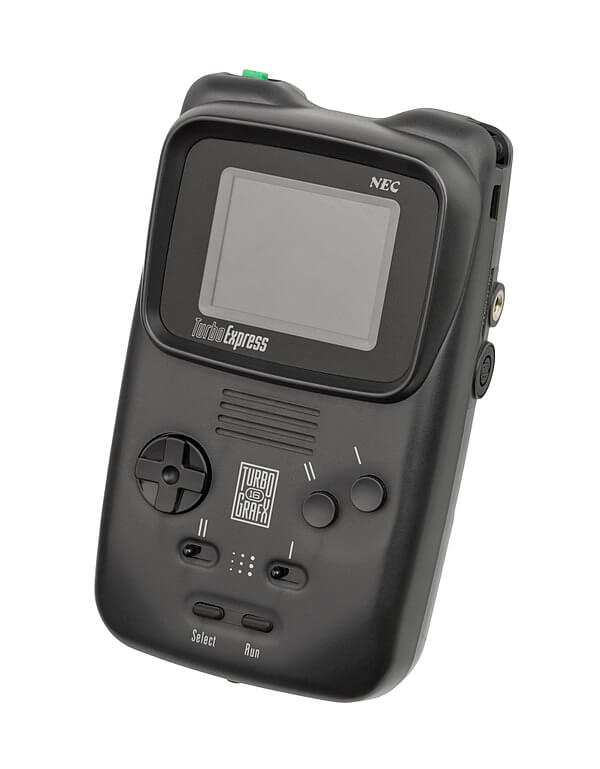
Turbo Express / Pc Engine GT, 1990: A true beast. A luxury laptop in every way, released in the United States and Japan, far superior to its competitors and only comparable to laptops released after the year 2000. The concept was very simple, the NEC notebook was nothing more than a portable PC Engine/Turbografx. Wonderful… Its $250 introductory price took care of turning this console into the Neo Geo of portables, an unattainable dream. Still, it sold more than 1 million units.
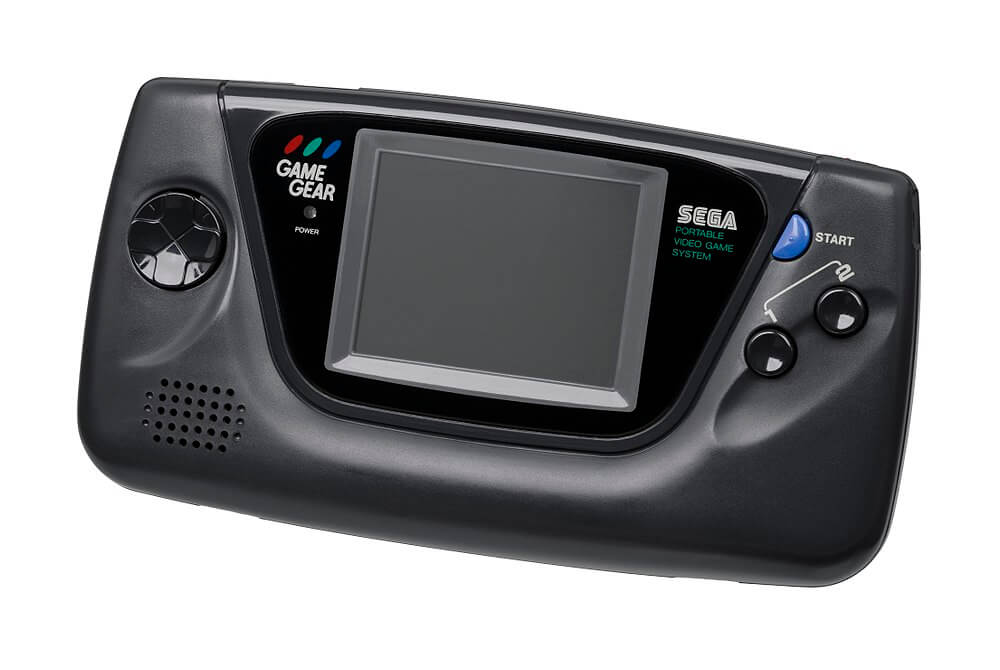
Game Gear, 1990: Sega showed off with a console that, in practice, was a Master System II. With a full-color screen and a magnificent catalog, it was the one that gave the Game Boy the hardest. In the same way as the Lynx, a high price, batteries that were barely enough to pass a game and a size that did not fit in a pocket (it was the cotton test), made it always stay in second place.
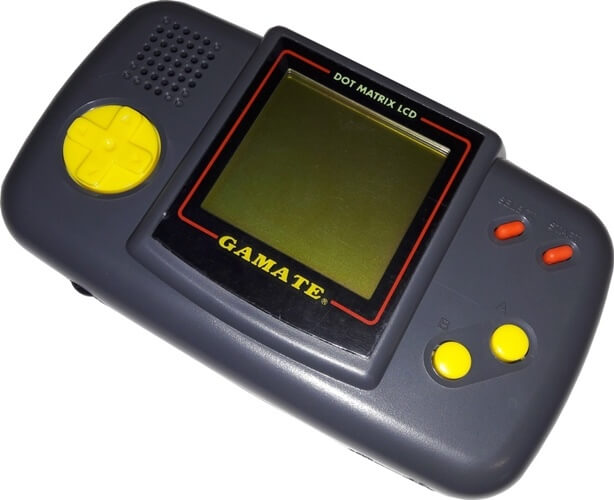
Gamate, 1990: Bit Corporation, located in Taiwan, was one of the companies that joined the Game Boy Boom trying to profit. With various names since there were multiple local distributors, if they gave it to you at the time, we feel very sorry for you.
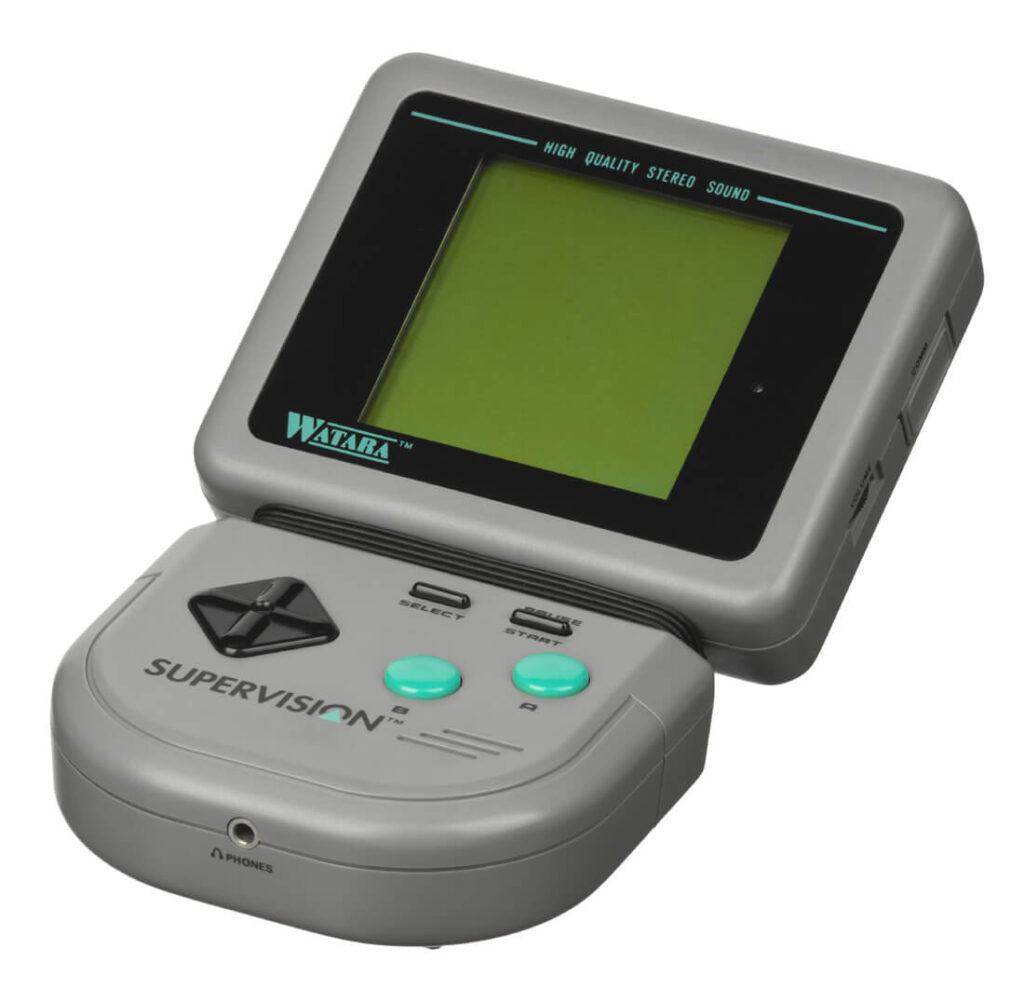
Watara’s Super Vision, 1992: Don’t say crappy, say Super Vision. With more than 11 versions due to independent marketing and distribution by country, this laptop that imitated the Nintendo laptop trying to get on the bandwagon offering a cheaper product, was the disappointment of thousands and thousands of children who did not understand like their grandparents or Three Wise Men could be so pigheaded.
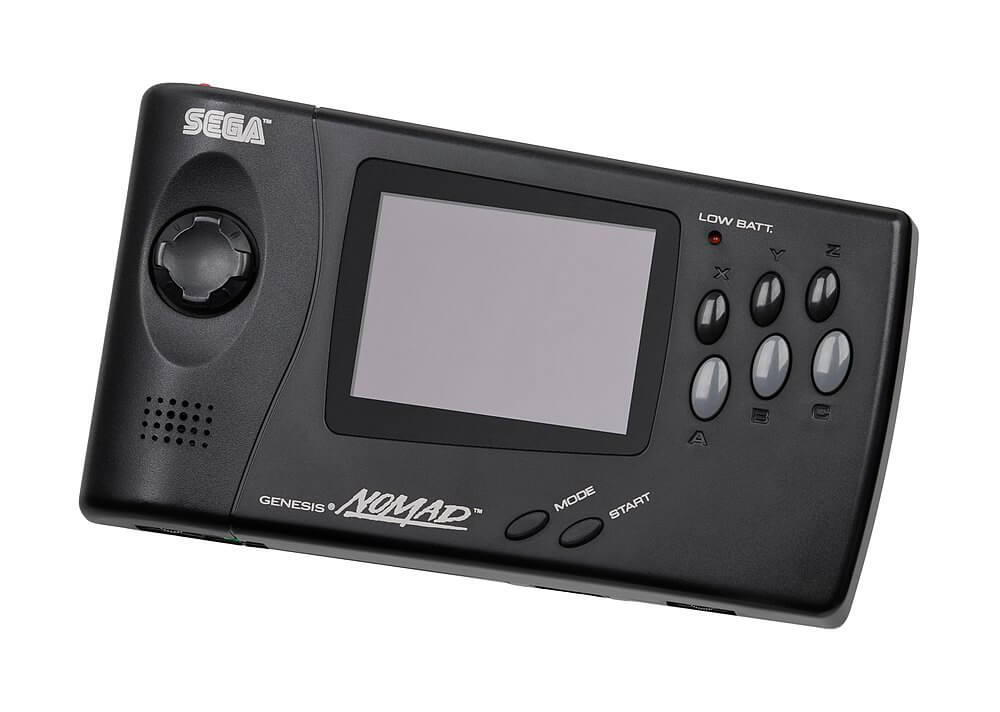
Sega Nomad, 1995: In the middle of the Saturn campaign, Sega America can think of nothing else but to take the fiasco of the Mega Jet (a compact Mega Drive), and turn it into a portable console. That after the Mega Drive II, two Mega CD models and a 32X. At that time people were already tired of Sega and its ravings, the Nomad was only distributed in the United States, its 2 hours of duration with 6 AA batteries did the rest… People continued happily playing the Mega Drive, but in his little house with his usual console.
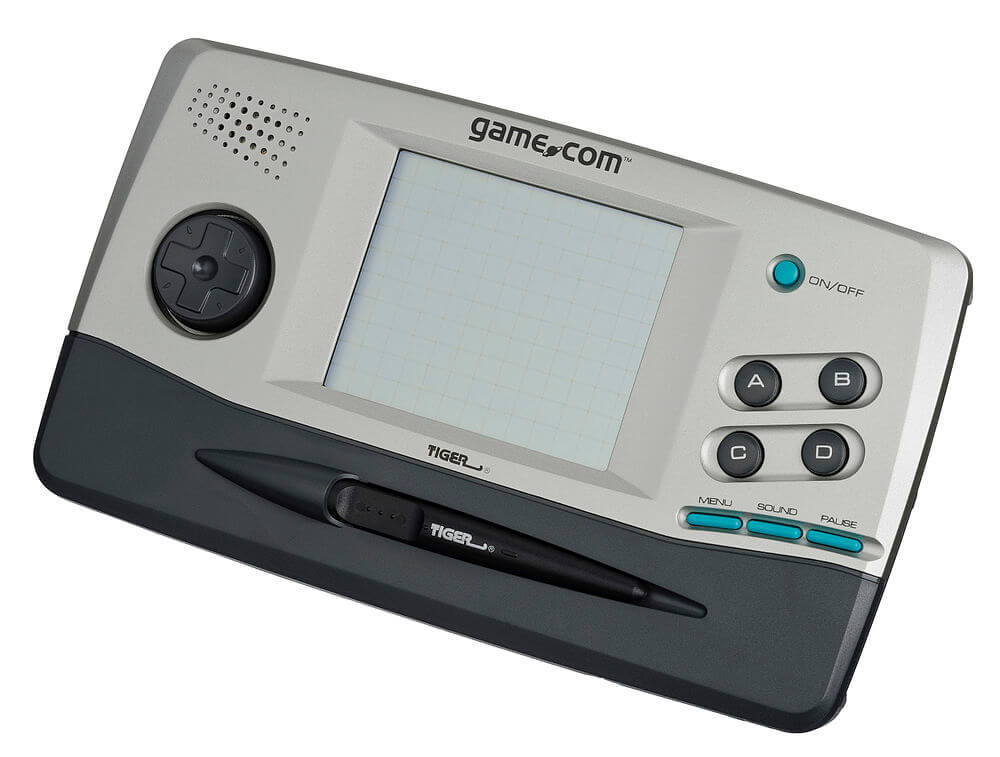
Game.com, 1997: Tiger Electronics’ Game.com was a very promising console released in the United States and Great Britain. Touch screen, Internet connection, PDA, features much higher than the 8-bit Nintendo and all this at a starting price of 80 dollars, it was an option to consider. Unfortunately, it had to do with the Game Boy Color and all of Nintendo’s marketing, it was a flop that sold 300,000 units also due to its lousy screen and refresh rate.
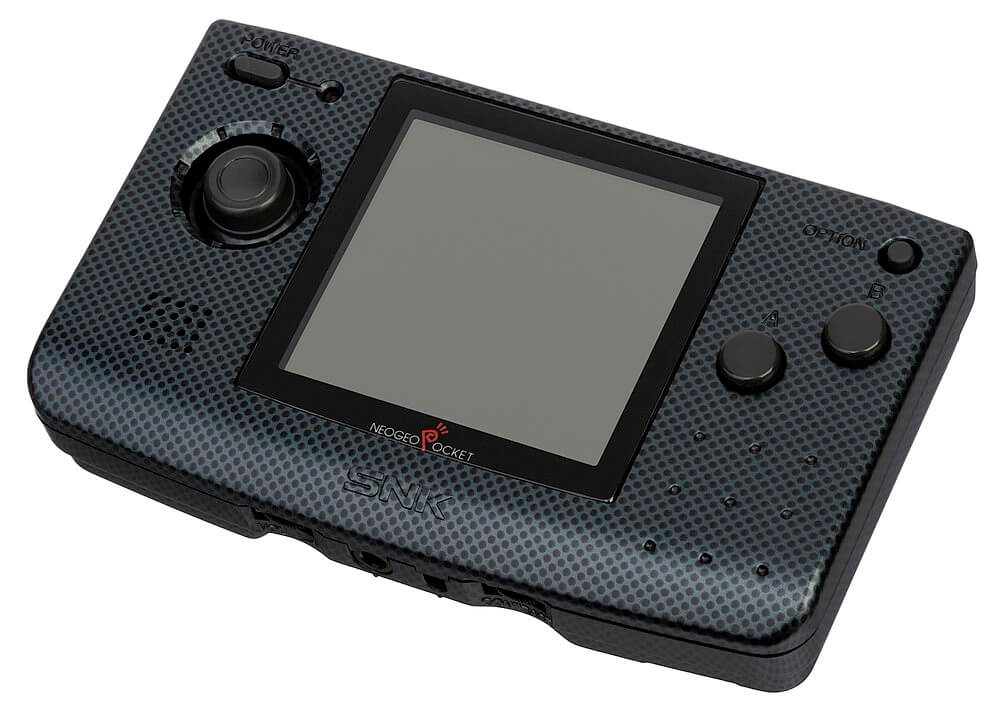
Neo Geo Pocket, 1998 and Neo Geo Pocket Color, 1999: This was something else, at the end of the 90′ the companies in the sector seriously considered facing the reign of the Game Boy (and its versions) with all the artillery. SNK released a very good laptop, far superior to our beloved Mario’s laptop but with the flaw of being black and white. The following year they rectified and launched the same console in color, despite having a good catalog of games and being distributed throughout the world, its commercial life was 2 years. Another great console that couldn’t stand up to the legacy of the Game Boy.
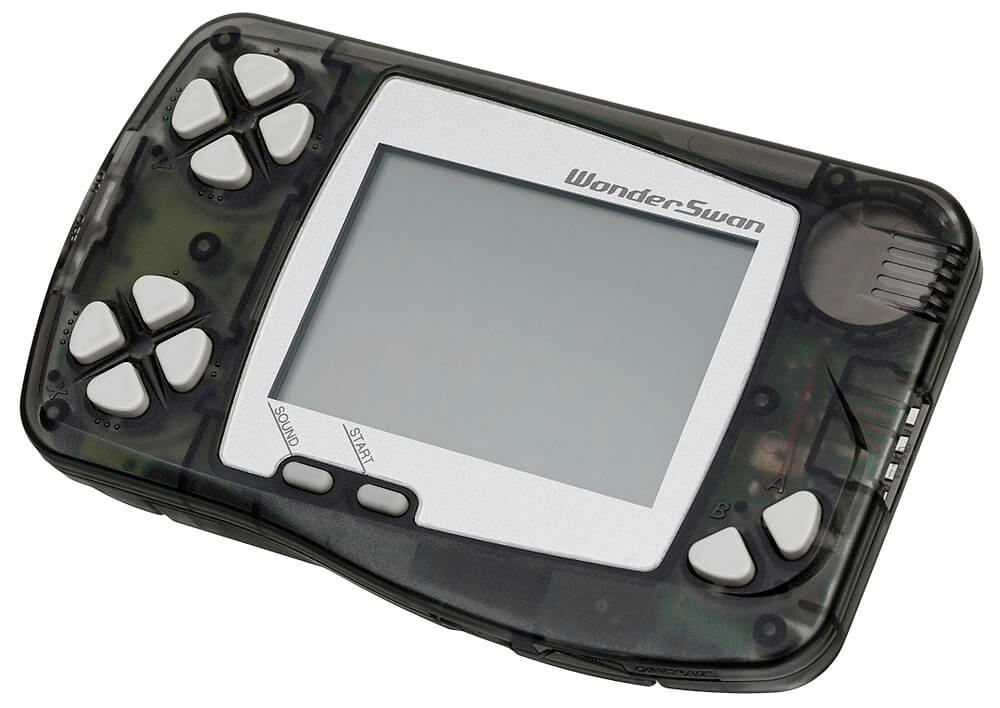
WonderSwan, 1999 and WonderSwan Color, 2000: Created by Gunpei Yokoi himself together with Bandai (a giant in Japan), it was the only console since the days of the Game Gear that really made things difficult for the Game Boy (it was only released in Japan). 16-bit graphics, far superior in performance than GB and GB Pocket, very good console design, large catalog of video games backed by Bandai (Dragon Ball, One Piece, Naruto…), 30 and 20 hours of life with a single stack, depending on whether we had the black and white or color version, launched at a very, very, very competitive price (40 euros for the first version) in the Gunpei Yokoi line of making products for all audiences… All this made it a practically perfect console for its time. Did he unseat the GB and its versions? Not at all, even selling several million units, the market was waiting for the new Nintendo handheld, which limited its sales by going out of production in 2003.
As we have seen, the GB had a long and full life, the perfect cycle dreamed of by any manufacturer: Monopolizing the market until the arrival of its successor, the GBA. It is clear that technically she was much inferior to many of her competitors, but once she was positioned in an advantageous position, it was impossible to take the throne from her. Seen as a whole, there were always more arguments in its favor than against: dimensions, batteries, price and later a huge catalog of games or that all your friends had it, made the GameBoy reign throughout the 90’s.
The different versions of the Game Boy
Although the original Game Boy remained present and active throughout the entire life of the console, as of 1996 Nintendo decided to accompany its lifelong portable, with new versions that are more up-to-date and powerful, but always backward compatible. Let’s take a quick look at the updates that helped extend the life of the Game Boy:
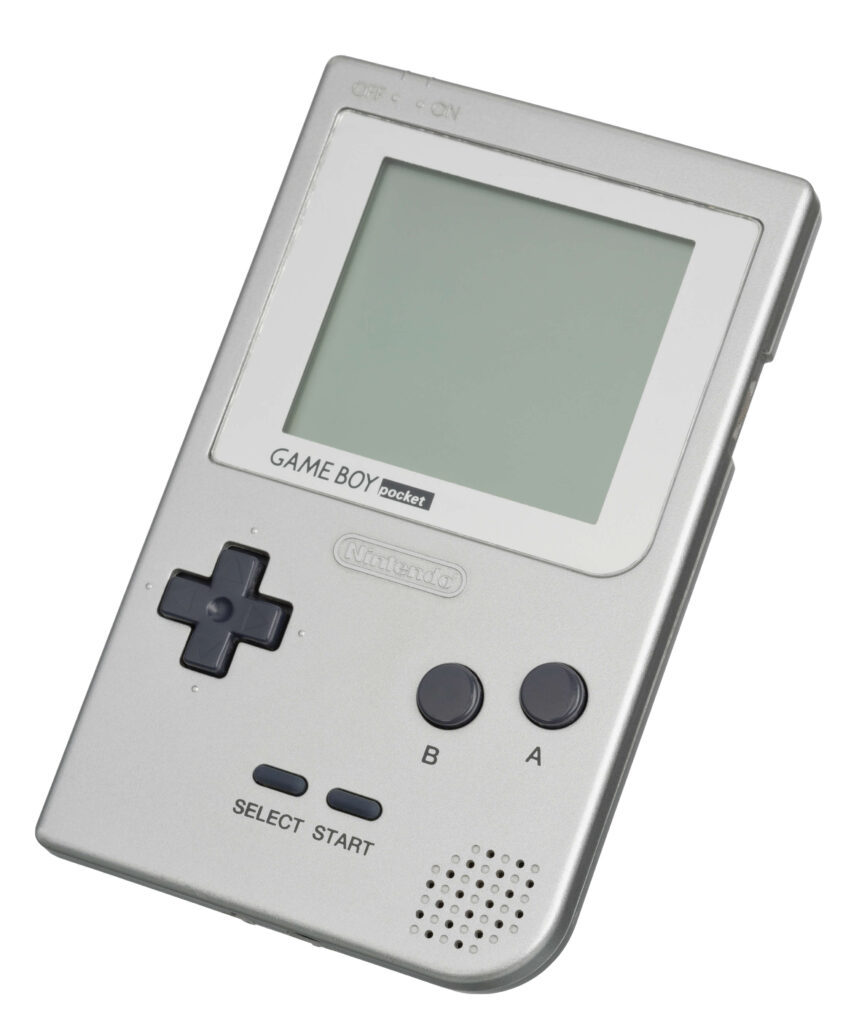
Game Boy Pocket, 1996: With this recurrent update in the world of consoles, Nintendo applied new technologies offering a renewed product that was smaller, lighter and with a new black and white screen that worked perfectly with all the games of the original GB . A good product that kept the laptop at the top for a few more years, being in practice a slim version of the laptop, a facelift that gave new arguments when buying a Game Boy over its competitors.
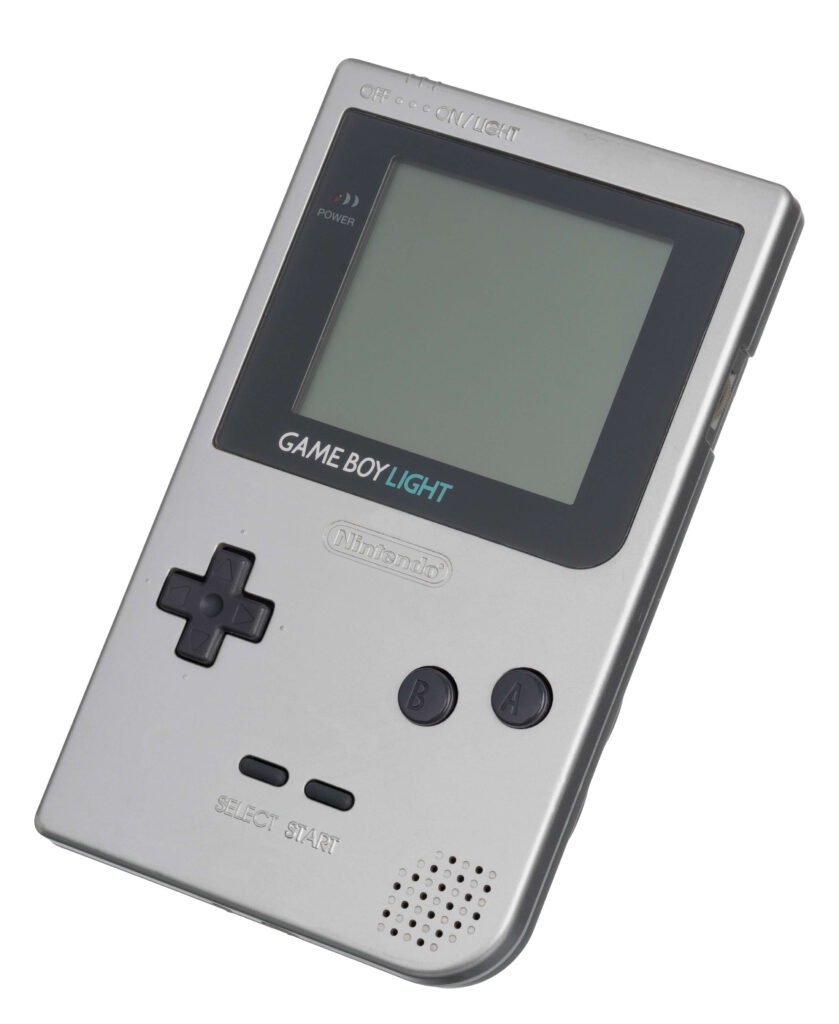
Game Boy Light, 1998: Launched exclusively in Japan, it corrected one of the great problems that the Game Boy has had since its inception, the lack of backlighting, which caused us to have to choose the place to play and the viewing angle well. This jewel is one of the most sought after consoles today, valued at hundreds of euros if it is in good condition. Fully compatible with all titles from the original video game console.
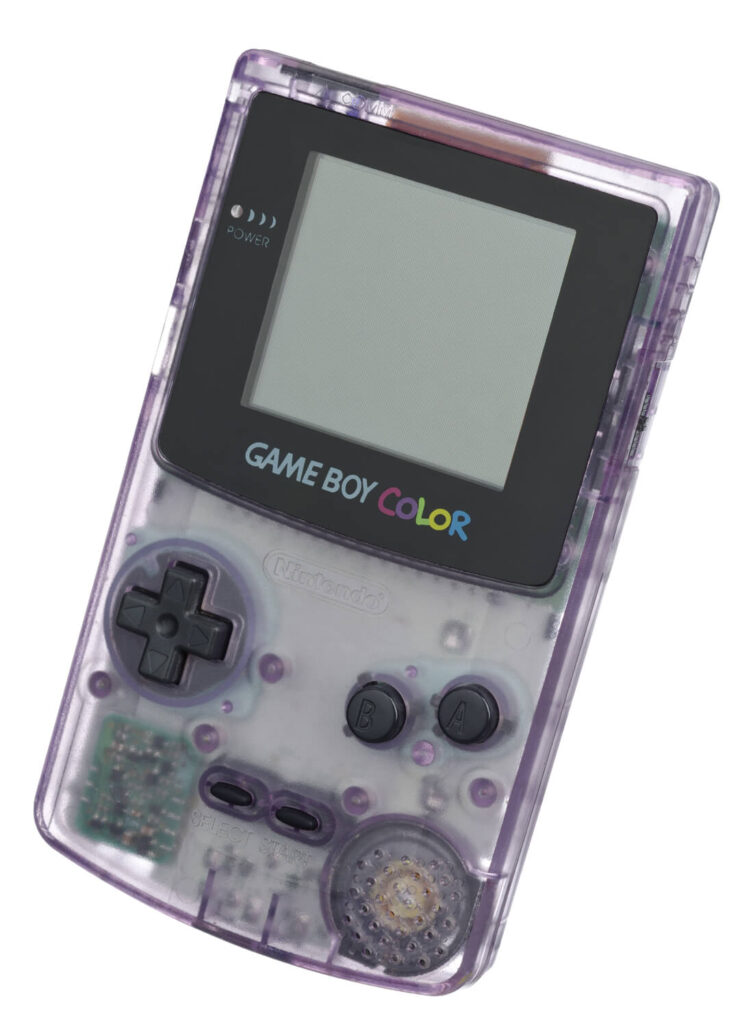
Game Boy Color, 1998: Launched as an evolution of the Game Boy, the GBC could really have been considered a Game Boy II, since the features of the GB Color were far superior to the original, giving us the impression at times of being in front of a 16 bit console. This fact was demonstrated when authentic great games exclusive to the Color version began to come out. Fully backwards compatible, it was ahead of its competitors and upheld the legacy of the Game Boy until years after the arrival of its successor, the GBA.
The Game Boy, icon of a generation
The Game Boy was the console that expanded the video game market, made video games just “guy stuff”, the perfect complement to our home systems, the perfect console to get into the world of video games, the first console for many of us, the one we took on vacation, to the bathroom, to recess, the one that got us hooked on sagas like Pokemon, the one that liquidated the market for slot machines/Game & Watch, the one that made magic with only four colors… The Game Boy was EVERYTHING.
Game Boy is the icon of a whole generation of video game fans, a console that exudes nostalgia on all four sides and that, as soon as we see it, transports us to a few years that, unfortunately or fortunately, will no longer return. For those of you who didn’t enjoy it at the time, the Game Boy may seem like an obsolete console, but I can assure you that many of the games to which players have spent the most hours throughout their lives have passed through its circuits. Nintendo’s Game Boy is a key piece of video game history, a handheld console that was neither ahead of nor behind its time, the perfect handheld console for its time.
Hey! We only use this cool and striking little orange when we have something very important or interesting to tell you. On this occasion we leave you a link related to “Nintendo Power”, the service that Nintendo invented in 1996 to be able to record Super Famicom and Game Boy games on memory cartridges, creating a new distribution channel with typewriters throughout JAPAN, quite a feat that was ahead of online downloads. Do not miss it!
NINTENDO POWER, the game rewriting service provided by Nintendo for the Super Famicom and Game Boy
The second youth of the Nintendo Game Boy
The 8-bit Game Boy system had a long and intense commercial life, beginning in 1989 and launching its last video game in 2003, quite a feat. But the Game Boy did much more than reign in the portable console market, unlike what happened with most consoles, the Game Boy enjoyed a second youth that catapulted it to the top.
To demonstrate the above, let’s see how were the raw releases (GB + GBC, many of them compatible) throughout the life of the Nintendo system:
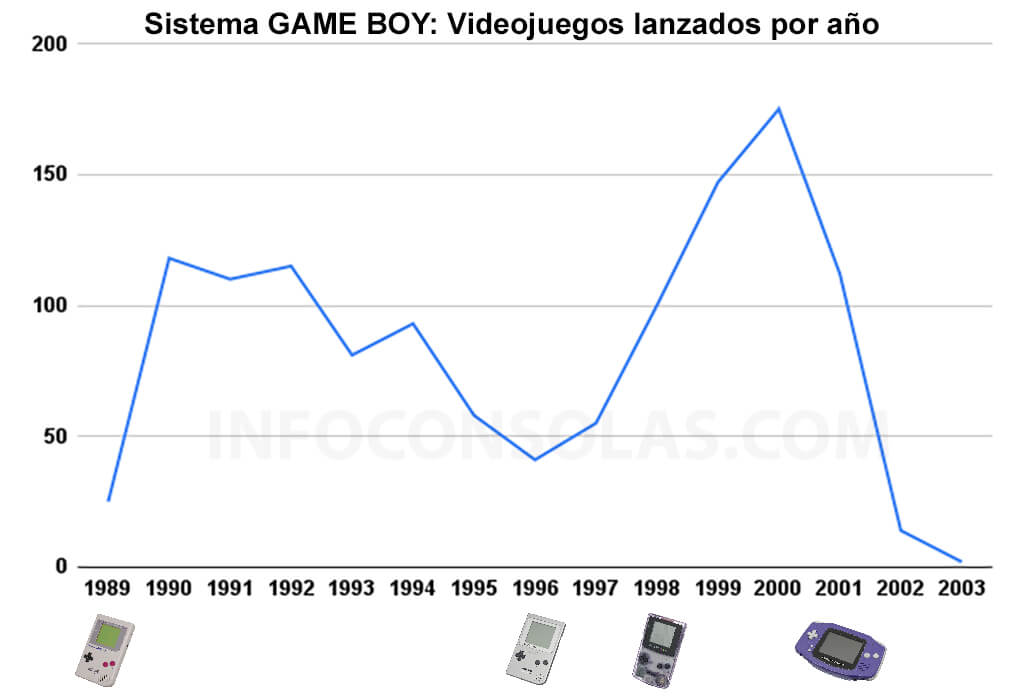
Impressive… In this graph we can see how Nintendo perfectly controls the times, with Nintendo itself being the only company capable of competing with its consoles. In 1990 we see how the Game Boy had a remarkable success, going from 25 to 110 releases in 1990, a figure that was maintained until 1992, when a logical decline began until 1996, the year in which the Nintendo handheld console already had 7 springs, being a cycle by which normally a successful console is written off…
But not. Year 1996, with a dying system with hardly any new releases, when the competition was lurking and any other company would have launched the “Game Boy 2” on the market, Nintendo plays its ace up its sleeve and launches a perfect combo to the world, a revolution that would take your system to the top again: The Game Boy Pocket + Pokemon review.
Look at the graph, look at the numbers of companies that jumped on the bandwagon again due to the millions of new consoles that Nintendo was selling… When the first owners of the original GB had already grown up, when portable consoles were considered “for children small” versus home systems like the PlayStation, Nintendo conquered the world with its new Game Boy and the Pokemon phenomenon. Did you want to play Pokemon? You needed a Game Boy, simple as that.
As if this were not enough, in 1998 the Game Boy Color was launched, without leaving the Game Boy system one iota, causing another blow that raised the health and sales of the system to the highest of its life, 175 launches in the year 2,000 for a system that at that time was already 11 years old… Colossal.
Only Nintendo could put an end to the Game Boy, as we can see, the market, the industry and the world had to wait until the year 2001, for the new 32-bit Game Boy Advance to supersede the original 8-bit system, going from 112 games released in 2001 to 14 in 2002 and 2 video games in 2003.
As you have seen, the Game Boy was everything in its time. A madness that no other console has been able to recreate.
The price of the Game Boy, how much was it?
Below, in order to be able to compare the cost of contemporary consoles, you have the starting price of the Nintendo Game Boy in Japan and the rest of the portable consoles that coexisted with it:
| CONSOLA | LANZAMIENTO | PRECIO DE LANZAMIENTO | MARCA |
| Game Pocket Computer | 1984 | 12.000 yen | Epoch |
| Game Boy | 1989 | 12.500 yen | Nintendo |
| Lynx | 1989 | 29.800 yen | Atari |
| Game Gear | 1990 | 19.800 yen | Sega |
| Game Boy Pocket | 1996 | 6.800 yen | Nintendo |
| Game Boy Light | 1998 | 6.800 yen | Nintendo |
| Game Boy Color | 1998 | 8.900 yen | Nintendo |
| Neo Geo Pocket | 1998 | 7.800 yen | SNK |
| WonderSwan | 1999 | 4.800 yen | Bandai |
| Neo Geo Pocket Color | 1999 | 8.900 yen | SNK |
| New Neo Geo Pocket Color | 1999 | 6.800 yen | SNK |
| WonderSwan Color | 2000 | 6.800 yen | Bandai |
In Europe, the price of the console was very different depending on the country, below you can see the price of the Game Boy and its games over time in Spain:
The Game Boy + Tetris went on the market in Spain for a price of 18,900 Ptas at its launch. In order to make a correct and contextualized comparison with its main competitors, the prices shown correspond to July 1992, the year in which both the Game Boy and the rest of the laptops had already lowered their starting prices:
- Nintendo Gameboy + Tetris: 12,900 Ptas.
- Sega Game Gear + Columns: 18,900 Ptas.
- Atari Lynx + 1 game: 17,900 Ptas.
- Atari Lynx II: 17,900
- Neo Geo Aes: 70,000 Ptas.
- Sega Master System II + Alex Kidd: 8,900 Ptas.
- Sega Megadrive with 2 controllers + Sonic: 27,900 Ptas.
- Nintendo NES: 9,900 Ptas.
- Nintendo SNES + Super Mario World: 29,900 Ptas.
- NEC Turbografx + Blazing Lazers: 18,900 Ptas.
12,900 Ptas with Tetris was a fairly accessible price for the time, any kid could save for a while or ask for it as a Christmas or communion gift (a classic). Its rivals, as you can see, were at much higher prices and more inaccessible, considering that the target audience for portable consoles in those years were children and adolescents.
But the Game Boy had a very long life, so let’s see the prices of the console in February 1999, by which time the Game Boy had ousted its main competitors, Sony had already launched its new versions, the PSX and its 32 bits reigned on home consoles and a new direct rival appeared:
- Original Nintendo Game Boy: 6,990 Ptas.
- Nintendo Game Boy Pocket: 8,990 Ptas.
- Nintendo Game Boy Color: 12,490 Ptas.
- NeoGeo Pocket: 12,990 Ptas.
- Nintendo 64 + Mario: 19,900 Ptas.
- Sony Play Station: 19,900 Ptas.
- Sega Saturn: 9,900 Ptas.
As you can see, even at the end of its life, with the monopoly achieved, Nintendo remained faithful to the principles that had led the Game Boy to success and always maintained very affordable prices. Let us highlight at this point as an anecdote, the price of the Saturn, at a time when its failure was already more than evident, the distributors were getting rid of their stock at ridiculous prices… Who would catch them!
The price of the Game Boy video games, how much did a cartridge cost?
The price of the games of a console is a fundamental factor when choosing which video game console to buy, let’s start with a comparison of the first months in which the three classic portables faced each other in Europe, June 1991, let’s see how much they cost Game Boy video games and their competition at the time:
- Nintendo Game Boy, Batman: 4.400 Ptas.
- Nintendo Game Boy, Castelvania: 3.900 Ptas.
- Nintendo Game Boy, Snoopy: 3.900 Ptas.
- Sega Game Gear, Dragon Crystal: 5.490 Ptas.
- Sega Game Gear, Mickey Mouse: 5.490 Ptas.
- Sega Game Gear, Super Mónaco GP: 5.490 Ptas.
- Atari Lynx, Rygar: 3.900 Ptas.
- Atari Lynx, Paper Boy: 3.900 Ptas.
- Atari Lynx, Rampage: 3.900 Ptas.
Fairly even… The Game Gear put up a fight and excused its higher price in its full-color screen and its good catalog of video games, which practically consisted of direct conversions from the Master System II (something very positive), while the Atari Lynx already showed signs of weakness with more competitive prices. Regarding the Game Boy, the price varied depending on the quality and memory incorporated in the cartridge.
Let’s now travel to the month of February 1999, by which time the Game Boy Color was already established and see its prices:
- Nintendo Game Boy Color, The Legend of Zelda DX: 5.990 Ptas.
- Nintendo Game Boy Color , Turok: 5.990 Ptas.
- Nintendo Game Boy Color , Wario Land 2: 5.990 Ptas.
- Nintendo Game Boy , Alleway: 2.990 Ptas.
- Nintendo Game Boy , Street Fighter II’: 3.990 Ptas.
- Nintendo Game Boy , Roger Rabbit 2: 4.990 Ptas.
- Neo Geo Pocket, Baseball Stars: 7.500 Ptas.
- Neo Geo Pocket, Pocket Tennis: 7.500 Ptas.
- Neo Geo Pocket, King of Fighters R-1: 7.900 Ptas.
- Sony Play Station, Resident Evil 2: 8.990 Ptas.
- Sega Saturn, Wipe Out 2019: 5.990 Ptas.
- Nintendo 64, Golden Eye 007: 8.490 Ptas.
A few years after the end of its commercial life, we can see a Game Boy Color that made the games of the new portable more expensive, even though in many cases they are compatible with the original Game Boy, which kept the price of its cartridges practically the same. We are also witnessing the stellar (and fleeting) appearance of the Neo Geo Pocket in Europe, a console that could not do anything against the monopoly of Nintendo and less, with those prices of the cartridges.
Collecting the Nintendo Game Boy
The Game Boy is a magnificent console to get started in the world of collecting retro consoles and video games, since millions of units and video games have been sold, you can buy both the consoles and their video games for quite attractive prices compared to other systems.
Now, for the purists of collecting we will find several problems:
- The catalog of cartridges: Being immense, it is unfathomable. Trying to get the entire collection is practically impossible for a common mortal.
- The State of the Units: Let’s not forget that the Game Boy was primarily intended for children, children who ran races, who played soccer and basketball, who threw their backpacks when they got home, children who stuck stickers and children who painted tattoos of Nirvana… And all this with your GameBoy. Consequently, finding a Game Boy in good condition is much more complicated than it may seem. One option is to look for a Japanese Game Boy, from what I have been able to verify Japanese children should go to singing, piano and violin classes, because their consoles are PERFECT.
- The boxes: The sum of children and cardboard boxes does not usually give a very good result… Most likely, most of us came up with the brilliant idea of throwing away the console and cartridge boxes because they took up a lot of space in our shelf… Who would have a Delorean to give a server a couple of slaps.
Likewise, as we have already said, the Game Boy is a good system to start with, a console that should not be missing from any collection, bringing together at least a dozen essential video games that are already part of history. If you are new parents, the Game Boy and its indestructible casing can also be a good starter console for your children, a bit cruel perhaps, but very satisfying for our ego and nostalgia.
Buy an original Game Boy
If you want to buy an original Game Boy, your place is eBay. In the following link to eBay you can see all the original Game Boy that are currently sold around the world, starting with Spain. Its price, condition, whether it comes with or without a manual or games included, are factors that will greatly influence the final price of the console. As we always recommend at Infoconsolas, the ideal when buying a console is to research the market, find out the real prices and buy within reasonable margins set by a single person, without haste, with patience. Only then will you really know when you are buying a market price and if that retro console you are bidding on is cheap or not.
A classic Game Boy in good condition already costs more than 70 euros and, if what you want is a console in perfect condition with its box and forespan, its price is around 120 or 140 euros (2021). As usual for some time in the world of consoles and retro video games, prices do not stop rising, how much can the Game Boy go? Without a box and in poor condition, it does not seem that it will increase much in the coming years, but if what you are looking for is a console in good condition, think that fewer and fewer units are coming out and their buyers are collectors, so they do not return to the market. .
Focusing on eBay, our recommendation is that you prioritize Buy It Now over bidding, since bargains disappeared in a market as fashionable as consoles and retro video games for many years. Now, to buy a cheap retro Game Boy at a good price, the best option is to quickly find someone who has not put an abusive price on Buy It Now. Be that as it may, never forget that one of the pleasures of collecting consoles is the steps prior to purchase: documentation (as you are doing at Infoconsolas), planning (what to buy, how much to pay, what games) and searching (with patience) periodically reviewing eBay and other specialized websites. These are aspects that we must know how to appreciate and enjoy, leaving the rush and frustrations aside, if it were easy all this would not be funny or meaningful!
Take a look on eBay to see what’s cooking right now to buy a second-hand Game Boy, good luck and good hunting!
STOP COLLECTOR! If you’ve seen the console listing on eBay, I want to say THANK YOU. Since 2004, the objective of Infoconsolas is to contribute to preserving the history of consoles and video games through our own collection of systems and the hours of work invested in this very website.
Being an eBay partner listing, if you buy a game or console, you will be helping Infoconsolas in the preservation of video game culture, so thank you very much again!
TOP: Best games for Nintendo’s Game Boy handheld console
Well, well, well… As a gamer who likes to share his own experiences with all of you, it is practically impossible for me to make a list of the best GameBoy games, taking into account the different versions of the console, the versions of Super Game Boy 1 and 2, the exclusivities by geographical areas, the different levels of quality that were achieved throughout its existence and, the feared and aggrandizing nostalgia factor…
Consequently, from Infoconsolas I will limit myself to showing you a list of very good original Game Boy games from my own experience, being convinced that all of you can add twenty more, but watch out! If you haven’t tried any of the following gems, you’re already late:
Tetris
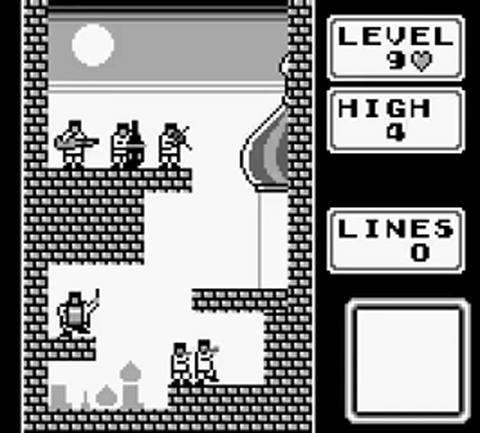
The only, the original, the best known version of this classic, you have it for your enjoyment on the original Game Boy. 100% Retro Nostalgia 100% replayable. The game that conquered the world in the palm of your hand in what is possibly the best system to enjoy it. A video game masterpiece.
The Legend of Zelda: Links’ Awakening
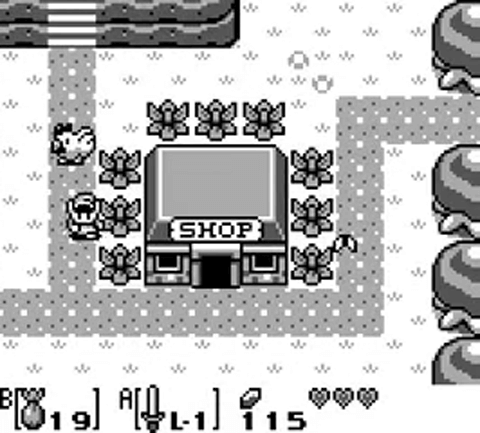
A remastered and versioned gem that deserves to be played on its original cartridge and system. If everyone agrees to place it among the Top 3 of the Game Boy, it will be for a reason. Incredible to observe how it was programmed in those years, to offer so much with “so little”, we are talking about 1993 gentlemen, the Game Boy was not even in the middle of its life cycle and it already offered us games like this legendary Zelda. Pure luxury.
Pokémon Rojo y Azul
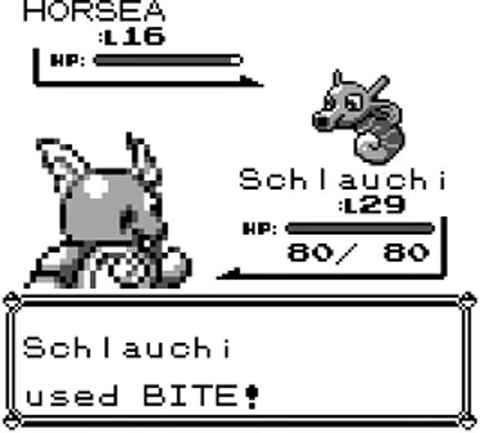
Launched in 1996, the first two editions of the Pokemon phenomenon became the new Tetris, far surpassing the results of this one. A saga that revitalized the console and gave it 5 more years of life.
Final Fantasy Adventure
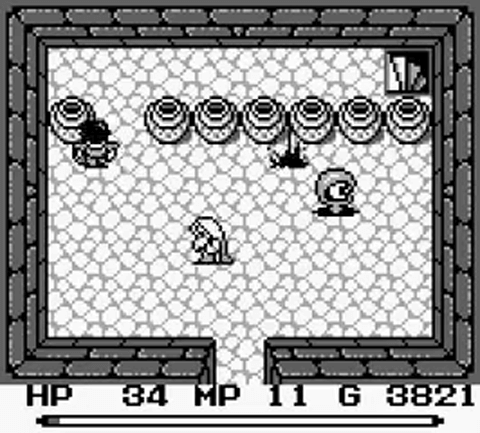
The Game Boy also had its Final Fantasy. Seiken Densetsu: Final Fantasy Gaiden in Japan and Mystic Quest in Europe. One of those games that already ventured that the Game Boy in 1991, was also a perfect home console for long gaming sessions.
Kirby’s Dream Land
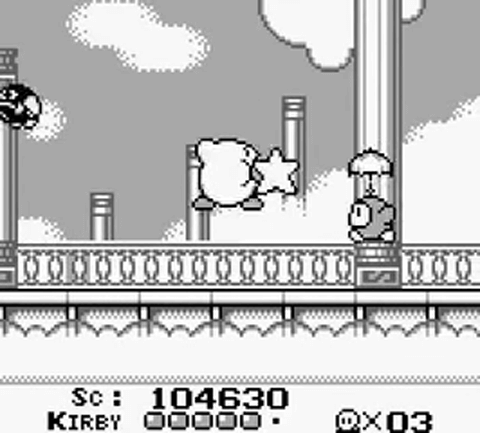
Released in 1992, Kirby is a perfect platformer for the Nintendo system. It hooked us all as children and started a saga that continues to this day. With a difficulty adapted for a child audience, its beautiful graphics made us all fall in love.
Gargoyle’s Quest
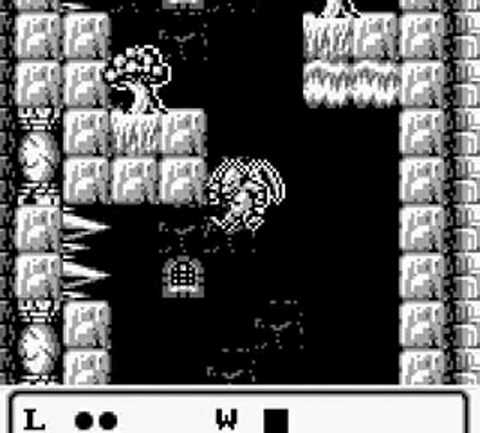
Great game… And created in 1990 gentlemen! Belonging to the Ghosts ‘n Goblins saga, the little Nintendo was able to enjoy this work of art created by Capcom. An essential that raised the bar for the console and forced the rest of the competitors to offer better products.
Super Mario Land 2: 6 Golden Coins
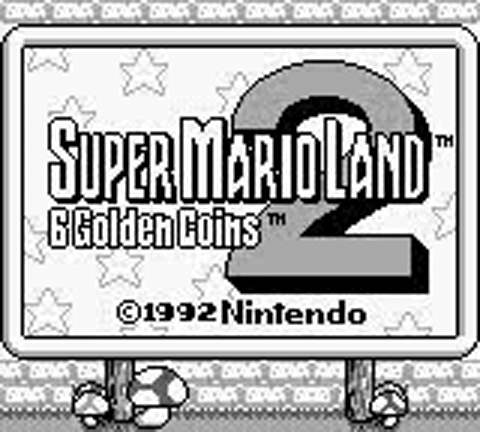
Now yes, after a Super Mario Land that confused us all by being very focused on short-term games, with this great game released in 1992 Nintendo applied a large part of what was seen in the last Marios on home consoles, something that made us freak out and marvel at everything that the Game Boy was capable of offering us, even comparing it to the 16-bit versions.
Wario Land: Super Mario Land 3
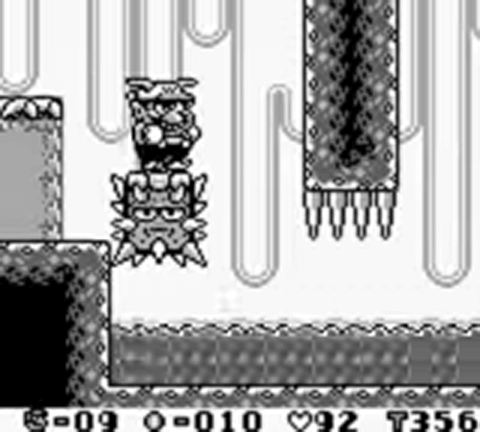
Year after year, Nintendo’s Game Boy was getting squeezed a little more. With this Wario Land from 1994 they left us speechless, one of the best platforms in the system, in a console specialized in platforms, which is no small thing. After the initial reluctance to take “the bad guy” of our beloved Mario, Wario Land was a continuous surprise after another.
Donkey Kong Land
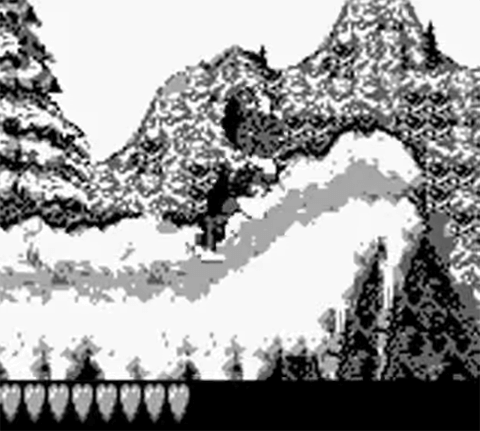
No one, I repeat, NO ONE, expected to see such a video game on the Game Boy, much less in 1995. Even when you’re playing it you can’t believe what you’re seeing. One of the best video games of the GB without a doubt, to which the photographs do not do any justice.
Ninja Gaiden / Shadow Warriors
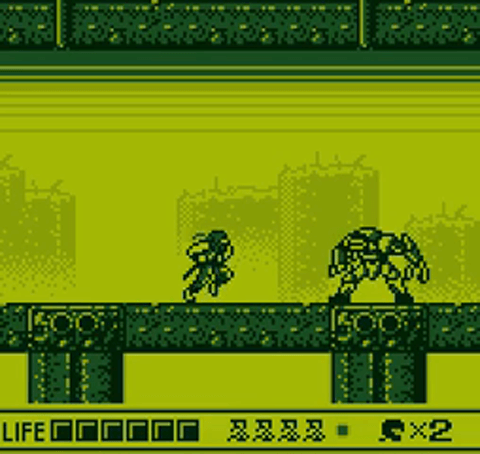
In 1991 we were into ninjas, and Ninja Gaiden was the hottest thing. What can nostalgia do to me? Well, surely, but as soon as the Game Boy arrived at our borders, we could be playing this at recess at school… It was the most gentlemen!
Ducktales

DuckTales + Capcom in 1989? A perfect combo that entered our eyes when we saw the box and got us involved in a great game with Uncle Scrooge and company. Capcom knew how to squeeze the Nintendo machine from the beginning, this being one of the many examples that managed to make you have 3 or 4 heads attached to yours when you played it at recess… Let’s hope it was you going to a mixed school.
Mole Mania
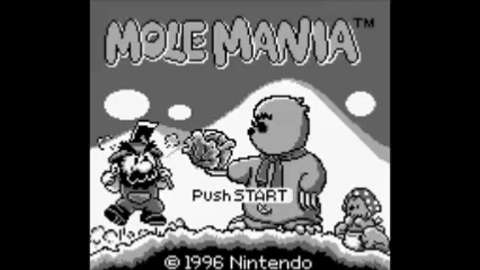
In 1996 Shigeru Miyamoto offered us a game that was not as well received as expected, we wanted jumps and Marios, Miyamoto offered us puzzles and fun… We were too young to appreciate this gem. As a curiosity: Right now, while I am writing this article (2021), I just bought it on eBay for 20 euros, a complete Japanese, notice because there are already phenomena that, being a little-known Miyamoto game, are selling it for 500 euros. .. Crazy.
Gradius: The Interestellar Assault
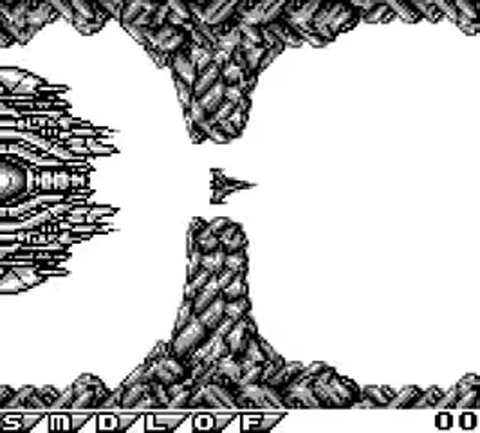
Or Nemesis II in Europe, released in 1991 by Konami, this list could not miss a lifelong Martian killer, one of the most popular genres in the 80s and early 90s. If instead you prefer the R-Type No problem, it’s also a great game.
Mega Man V
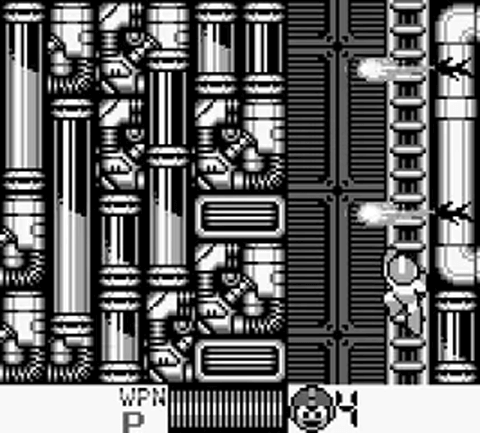
Mega Man is one of those sagas that cannot be missing from any compilation. Launched in 1994, Capcom presented us with a very good game that had little or nothing to envy its older brothers. If you are followers of the saga, do not hesitate and get hold of it.
Nintendo GameBoy FAQ
Here is the GameBoy questions, answers and trivia section, a must-read for all collectors of this system, the most popular handheld in video game history. If you want to collaborate or correct any data you can use the comments with your own Google account.
The release date is April 21, 1989 in Japan.
On July 31, 1989 in the USA and on September 28, 1990 in Europe.
The laptop officially arrived in Spain on January 21, 1991.
At its launch 12,500 yen in Japan, $89.95 in the USA and 8,990 Pts. in Spain.
The Tetris, with more than 30 million units sold.
The Game Boy was developed by Gunpei Yokoi, Satoru Okada, and their team Nintendo Research & Development 1.
Cartridge ROM.
It is an adapter to be able to play our Game Boy cartridges on the Super Nintendo.
1046 total commercial video games for the original console compatible with the Pocket, Light and Color.
915 games.
In the box and the cartridge itself, it is indicated if they are compatible or not.
Seven: Gray in 1989 and white, black, red, yellow, green and transparent in 1994.
4 AA batteries.
90 mm wide, 148 mm high and 32 mm deep.
394 grams.
Approximately 30 hours depending on brightness and volume.
160×144 pixels.
Yes, astronaut Aleksandr A. Serebrov took the Game Boy and Tetris with him on the Soyuz TM-17 mission, spending 196 days orbiting the earth… What vices he must have hit…
Shogi 3, released on December 24, 2001 for the Game Boy and Game Boy Color (compatible).
From TV Animation One Piece: Maboroshi no Grand Line Boukenki! Released on June 28, 2002 for the GB and GBC Color (compatible).
Doraemon no Study Boy: Kanji Yomikaki Master, released on July 18, 2003.
Technical characteristics of the Game Boy video game console
- CPU: Sharp LR35902 8-bit 4.194304 MHz. A custom-made processor for Nintendo that mixes features mainly from an Intel 8080 with some from a Z80, along with features of its own.
- RAM: 8 kB internal SRAM
- VRAM: 8KB internal
- ROM: 256 bytes in the CPU itself, containing the boot system (bootstrap). PROM cartridges with a capacity of 256 kbit, 512 kbit, 1 Mbit, 2 Mbit, 4 Mbit and 8 Mbit (i.e. 32 kbyte to 1 Mbyte of memory).
- Sound: 4 channels. 2 pulse wave generators, 1 channel of 4-bit PCM samples (64 4-bit samples played in a 1×64 or 2×32 bank), a white noise generator and an audio cartridge input. The GB only has one speaker, but it does have a headphone jack so you can listen in stereo.
- Screen: reflective LCD with an aspect ratio of 10:9 and a resolution of 160×144 pixels
- Colors: 4 shades of gray
- Simultaneous on-screen sprites: 40 sprites each 8×8 or 8×16 [selectable]
- Communications: serial port
- Power: 4 AA batteries
- Users: up to 2 via link cable connected to the serial port and a Game Boy with a game cartridge for each user; or 4 with the “Four Player Adapter”
- Dimensions and weight: 90 mm wide, 148 mm high and 32 mm deep. Weight: 394g
- Technical characteristics obtained from wikipedia
External sources and links
- Hobby MagazineConsoles
- MicroMania Magazine
- Nintendo Action Magazine
- Super Games Magazine
- Console graphic resources: https://commons.wikimedia.org/wiki/User:Evan-Amos
- Gunpei Yokoi graphic resources: https://www.imdb.com/name/nm0948386/mediaviewer/rm711402240

